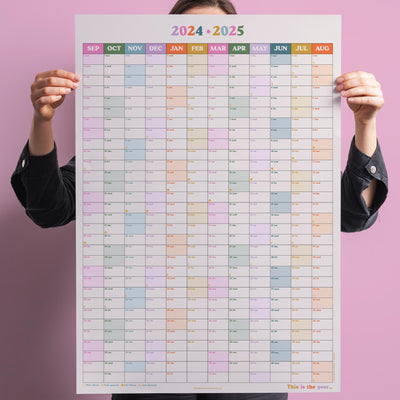6 Steps to Plan for Q4 for Small Businesses

In this step-by-step guide, I'll share my tried-and-tested method to help you prepare for Q4 as we approach the festive season.
September feels a bit like a new year when it comes to work. Hopefully, you arrive to this month feeling revived, after enjoying some time away perhaps, and some sunshine to boost the soul (who am I kidding - you’re a small business owner lol).
Regardless, it's the perfect time to rethink, reorganise, and strategically plan for the silly season ahead.
Here are my tips and practical steps that I follow to get my plan in order.

1. Organise Your Workspace
While it may seem obvious, giving my workspace a reset does wonders for your clarity of thought. I recommend decluttering your workspace, ensure you have all the necessary stationery, calendars, planners and essential supplies, and create an environment that fosters focus and productivity.
2. The Big Picture
Take a few uninterrupted hours away from your email inbox and daily tasks to gain a holistic view of the upcoming season.
With events like Black Friday, World Kindness Day, Small Business Saturday, Advent, Christmas, Boxing Day, and New Year's Eve on the horizon, I find it helpful to set up a large planner and mark all the significant dates and events relevant to our business.
Once the calendar is filled in, you can work backward from the end of the year to schedule your planned activities.

3. The Brainstorm
With the dates written down, my brain is now usually buzzing with ideas, from marketing campaigns and social media content to new product concepts, photography, and PR strategies. It's time to let the creativity flow.
Grab a large sheet of paper (the back of last year's planner works a treat), some Post-it notes, and a Sharpie, and jot down ALL your ideas.
4. The Growth Plan
Before you dive into developing these ideas, take a moment to revisit your business's growth plan.
While marketing campaigns and day-to-day operations are vital, you must allocate time for the long-term vision of your brand.
This could involve hiring new team members, creating an email welcome series, developing new products, or expanding into wholesale, for example.
These projects require dedicated time and energy, and the only way that will happen if you schedule them into your calendar.
List the projects you need to tackle over the next four months, estimate how much time they will take, and set completion deadlines.
For instance, if you aim to finish your email welcome series by mid-October, and it will take 3 days to complete - allocate those three working days in your calendar to ensure you have the necessary time and space for these essential endeavors.
5. The Edit
From your brainstorming session, you now have a host of ideas. It's time to scrutinise each one. Under each idea, outline the concept and specify the required time and resources.
Be realistic about what you can realistically achieve—remember that doing a few things exceptionally well is more valuable than spreading yourself thin.
Also, assess whether each idea aligns seamlessly with your brand identity. Once you're satisfied with your list of plans, organise them into a realistic timeline.

6. The Plan
Whether you prefer a week-by-week or month-by-month plan, create a clear roadmap on paper, spreadsheets, or your wherever you plan.
Include only the achievable items on this plan, (you can keep a list of secondary backup ideas on the side). Stay focused on the key drivers for your brand.
Ideally, create a timeline detailing when you need to work on specific campaigns or projects, complete with clear deadlines.
For instance, if you're planning an advent countdown giveaway with other brands, start reaching out and coordinating assets well in advance of December.
In conclusion:
Taking dedicated time away from the daily grind to plan ahead is your way of seizing control of your business's future, rather than being swept along by the day-to-day demands. I assure you, this exercise will leave you feeling refreshed and motivated for the period ahead.
If you have tips to add, please message me on Instagram @onceuponatuesday_
Find some of our favourite planning tools in the Business Planning Collection here.






















